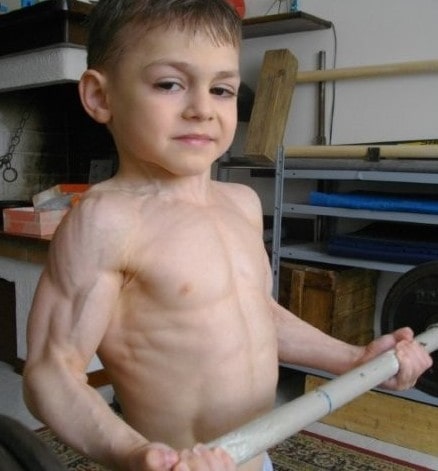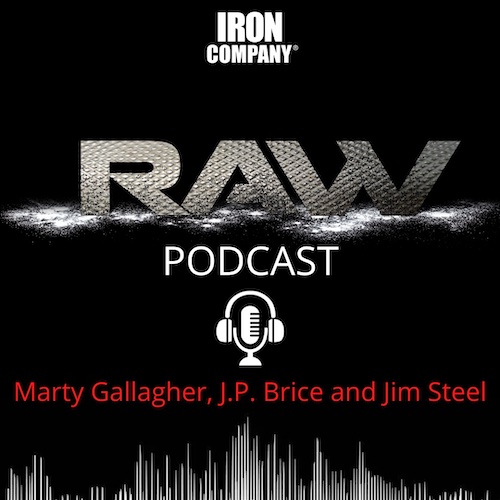
Powerlifting Articles
Strength writers, the articles, the columns they wrote, the impact they had on my life
I began reading the muscle mags at age 11 in 1961, long before any powerlifting articles came in to existence. My Irish father, a decorated WWII army Sargent (4th wave, Omaha beach) would drive my younger brother and myself to the Wheaton news stand every Sunday morning after Mass. My dad was highly literate and weekly would pick up a fistful magazines and newspapers. My father would linger and talk with the news stand owner and sole employee, his friend Alec Lysus, a WWI trench warfare veteran. The two would talk for a solid hour while my brother and I would sit on the dusty floor and read comic books.
Initially, my childhood reading interests ran to Donald Duck, Mickey, Goofy, Scrooge McDuck, Bugs Bunny, Elmer Fudd, kid stuff. I segued into harder fare, superhero comics: Batman, Superman, Green Lantern, Flash, Aqua Man, et. al. The superhero comics planted in my protuberant mind a craving for a superhero physique. All good guy superheroes had excellent physiques: wide shoulders, wasp-waists, great arms, broad backs, and powerhouse legs. In my mind, building a physique like that was necessary if I wanted superpowers.
Every comic book of that era had muscle ads: Charles Atlas always had a full-page ad touting Dynamic Tension, a worthless regimen that made him rich. Mr. America Clancy Ross had an impressive comic ad indicating that using his method “built 18-inch arms.” I was intrigued: I snuck a cloth tape out of my grandmother’s sewing kit and made an 18-inch circle. “Impossible!” I thought as I gazed at the circle. I could put my 11-year-old head through that circle. Later in life I built genuine 19-inch arms.

At the Wheaton news stand, the comics were set on the lowest level and the Muscle Magazines, Strength & Health, Muscle Builder, and Iron Man sat on the rack above the comic books. I commenced reading them. My father saw my interest and bought me the muscle mags. For Christmas in 1962 I was gifted a 110-pound barbell set. I scoured the muscle mags for training routines, which I religiously performed. I wore that 110-pound set out, this right as I commenced puberty. My boy body, flooded with testosterone, muscled-up. My progress was astounding.
The combination of testosterone coming online, my continual athletic activities, my voracious eating, and daily lifting, hardened my baby body. At age 12, weighing 120, I clean and pressed 120. I had worked for months towards this. As I got deeper into the Iron Game, I discovered information sources that changed my physique and changed my life. As the muscle magazines came out at different times, three different days of a month I would walk two miles to purchase either Strength & Health, Muscle Builder, or Iron Man.
By the mid-sixties, more muscle mags appeared as both York (Muscular Development) and Weider (All American Athlete) launched second magazines. I would study these magazines like a Talmudic scholar and then rush to my basement gym Boy Cave to try the new Freddy Ortiz bicep routine or a Phil Gripaldi overhead press routine. In the mid-sixties the sport of powerlifting was formalized and accepted by the AAU. Both the Weider and York organizations began regularly publishing powerlifting articles in 1965.
Terry Todd was important: he had won a tennis scholarship at the University of Texas in Austin. He began power training and added slabs of muscle to his 6-3-inch frame. Tennis lost a scholarship athlete as Todd became powerlifting’s earliest superstar. Todd was squatting over 700, bench pressing 500, and deadlifting a few pounds shy of 800. He won the first AAU superheavyweight powerlifting title and secured a big job with Bob Hoffman, who wanted to jump on the powerlifting bandwagon. Terry was highly educated, opinionated, and a good writer.
Todd used a lot of folksy aphorisms and Texas bunkhouse humor in his powerlifting articles. Fedor Dostoevsky once said, “All of us (early 19th century Russian writers) crawled out from under Gogol’s ‘Overcoat.’” Meaning all subsequent Russian writers were heavily influenced. Muscle writers could say, “We all crawled out from under John McCallum’s Key’s to Progress.” Mac was the master of using characters to portray strength-building lessons in his articles. Todd added Texas swagger to Mac’s folksy-isms in his numerous power articles.
In the mid-sixties, power god Paul Anderson was featured in a series of articles by Todd. One great story: Paul liked to golf. He had two putting greens on his farm placed 300-yards apart. Paul took Terry golfing. Drive the ball, walk, hit an iron shot onto the putting green, walk, putt out. Paul had pre-loaded barbells set up adjacent to each putting green. On rack #1 he would “rep out” squat 800-pounds. Back to the first putting green where Paul would “rep out” 405 in the overhead press. Paul did this all afternoon.
That powerlifting article blew my 15-year-old mind. It still does to this day. It is a strength folk legend that Terry Todd thankfully retold. Todd did an entire series of powerlifting articles with Anderson, a radical thinker and innovative trainer. One powerlifter article was called, Big Paul and the Big Pull. Todd described Paul’s extensive pulling regimen: deadlifts wearing straps with hooks, good morning bend forwards with a 55-gallon oil drum packed with cement, Anderson pulls 505 to sternum height (outdoors) wearing cowboy boots, awe inspiring.
Terry was the leader of the “Youth Movement,” young athlete/writers under age 30. Hoffman desperately sought to change the direction of his magazines. The WWII vintage men that ran his magazines were caught flatfooted by archrival, Joe Weider. Joe was hipper than hip and raking in the cash with his “swinging 60s, Go-Go, Beach Lifestyle muscle mags. He featured smoking hot babes in his ads. Terry Todd used his Texas connections to bring in a fantastic athlete-writer named Tommy Suggs – who in turn brought wild-child Bill Starr.
These men Todd, Suggs, Starr, were all national level athletes that were competing and kicking-ass currently. These weren’t retired champions reflecting on glory days. The men could all write, and they were all seeking to take their respective national rankings to the next level. They were “in the deal” and when they got an opportunity to quiz the men they looked up to, they interviewed the champs like a DA grilling a suspect. They passed along empirical insights and tips, they clued us in on how the best of the best went about it.
In short, they walked the walk and could talk the talk. In the mid-sixties, Joe Weider decided that he was going to fight Hoffman for domination in the new sport of powerlifting. He enlisted the services of the eclectic, volatile, George Frenn, a highly educated educator. Another athlete, George was world class in explosive throwing events. George took up powerlifting to aide his throwing. The eclectic George trained with an equally eclectic group of powerlifters that gathered in Bill “Peanuts” West garage gym on the West side of LA.
Joe Weider was a regular visitor. He would bring along photographer Gene Mozee (a 450-raw bencher at 195 bwt) or Russ Warner. They would snap dramatic photos of West squatting, Frenn deadlifting, and the biggest superstar in powerlifting, Pat Casey benching 600-pounds. Joe was gob smacked. He hired George Frenn to begin writing powerlifting articles for Muscle Builder. Joe stayed a fan of powerlifting until another new fad arose, women’s bodybuilding. When women’s bodybuilding took off in popularity, no more powerlifting articles.
The York Barbell outfit launched Muscular Development magazine and devoted a full 1/3rd of the magazine content to powerlifting articles. My powerlifting mentor, Hugh “Huge” Cassidy had numerous articles done on him and his career. Hugh, another educator, had a dozen of his articles published in Muscular Development. He mentored my own writing career. He and I cowrote four powerlifting articles, my first-ever published articles, this in 1978. To come full circle, as an adult I wrote articles for the same magazines that I read as a child. It is Déjà vu all over.
*Image Source: Giuliano Stroe (official page)
About the Author - Marty Gallagher
As an athlete Marty Gallagher is a national and world champion in Olympic lifting and powerlifting. He was a world champion team coach in 1991 and coached Black's Gym to five national team titles. He's also coached some of the strongest men on the planet including Kirk Karwoski when he completed his world record 1,003 lb. squat. Today he teaches the US Secret Service and Tier 1 Spec Ops on how to maximize their strength in minimal time. As a writer since 1978 he’s written for Powerlifting USA, Milo, Flex Magazine, Muscle & Fitness, Prime Fitness, Washington Post, Dragon Door and now IRON COMPANY. He’s also the author of multiple books including Purposeful Primitive, Strong Medicine, Ed Coan’s book “Coan, The Man, the Myth, the Method" and numerous others. Read the Marty Gallagher Biography for a more in depth look at his credentials as an athlete, coach and writer.



